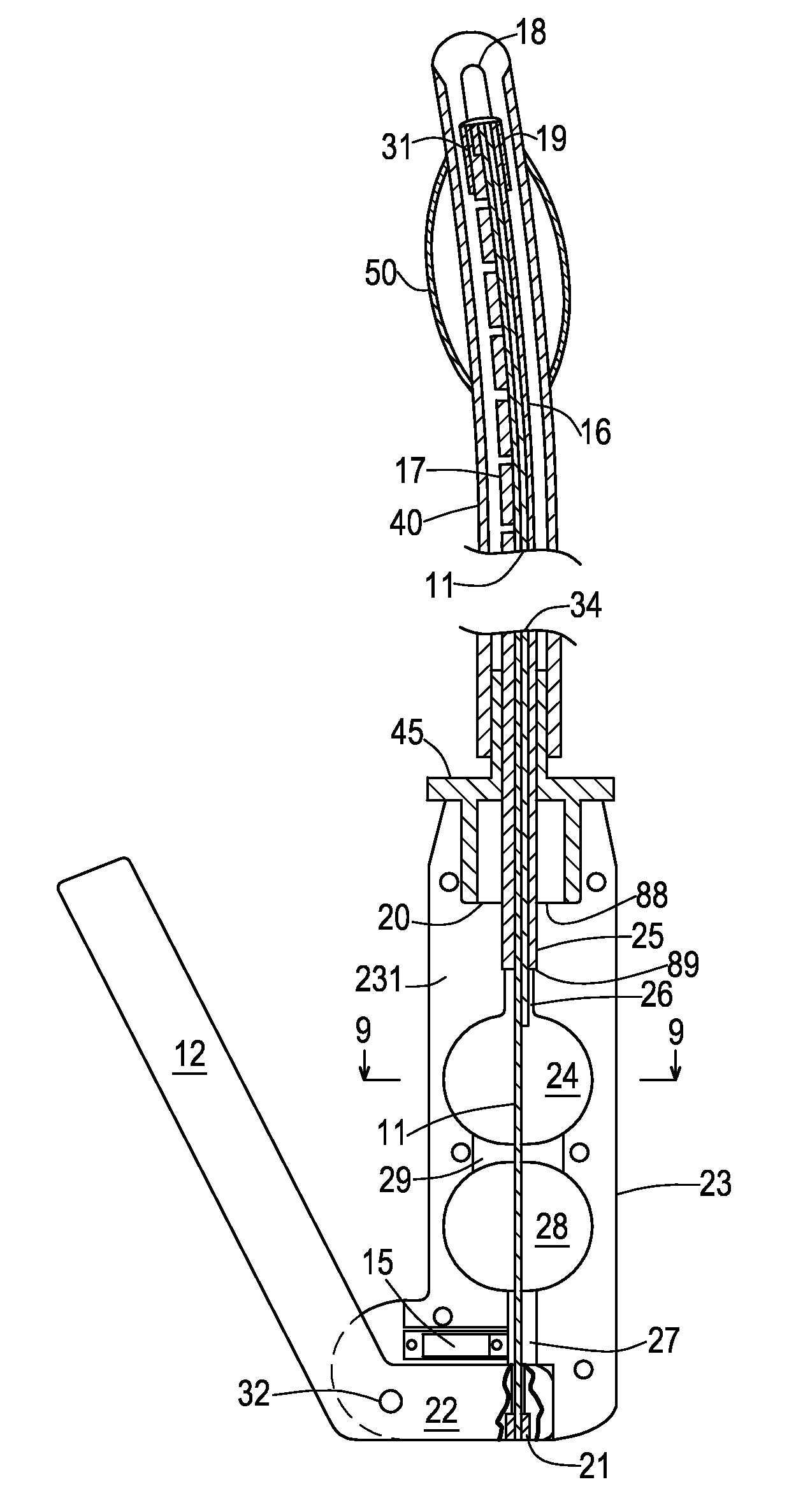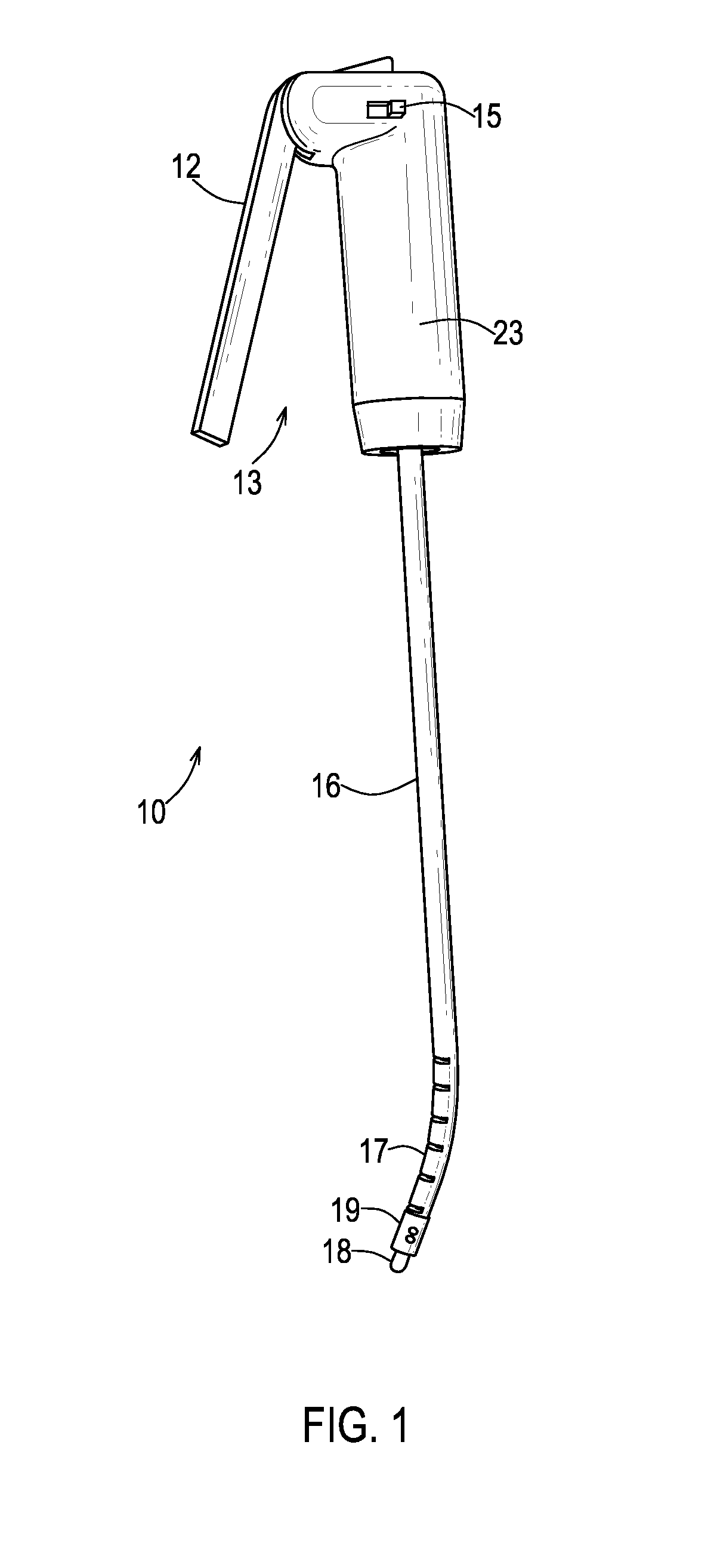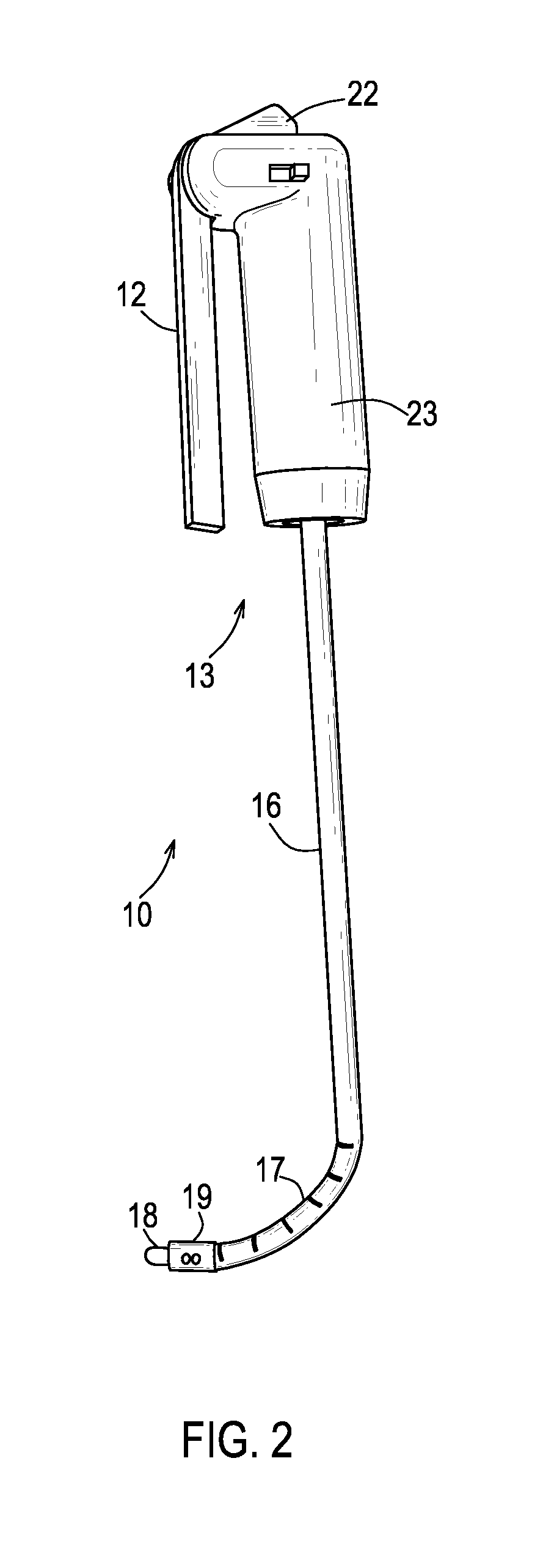Endo-tracheal intubation device with adjustably bendable stylet
a technology of trachea intubation and bendable stylet, which is applied in the field of medical devices, can solve the problems of spinal cord injury, special challenge to medical practitioners, and patients with more difficult airway access
- Summary
- Abstract
- Description
- Claims
- Application Information
AI Technical Summary
Benefits of technology
Problems solved by technology
Method used
Image
Examples
Embodiment Construction
[0030]In the drawings, an improved endo-tracheal intubation device is indicated generally by the reference numeral 10. The device 10, designed for single use only, provides its own bright, battery-powered LED light 18 to illuminate the vocal cords of a patient's larynx so that a medical practitioner can visualize them directly in certain individuals—specifically, those whose neck can be hyper-extended in such a fashion that anatomical structures along the patient's airway are aligned linearly—and, more generally, to enable a trained observer to confirm placement of a conventional endo-tracheal tube 40 in the trachea, as can be determined by observing the position of the device's light as it shines through the skin of the patient's neck. Coupled with this low cost visualization tool is a novel mechanism which allows the operator to deflect the tip of the endotracheal tube 40 towards the vocal cords, thereby facilitating its proper placement anteriorly in the trachea.
[0031]Basic to th...
PUM
 Login to View More
Login to View More Abstract
Description
Claims
Application Information
 Login to View More
Login to View More - R&D
- Intellectual Property
- Life Sciences
- Materials
- Tech Scout
- Unparalleled Data Quality
- Higher Quality Content
- 60% Fewer Hallucinations
Browse by: Latest US Patents, China's latest patents, Technical Efficacy Thesaurus, Application Domain, Technology Topic, Popular Technical Reports.
© 2025 PatSnap. All rights reserved.Legal|Privacy policy|Modern Slavery Act Transparency Statement|Sitemap|About US| Contact US: help@patsnap.com



